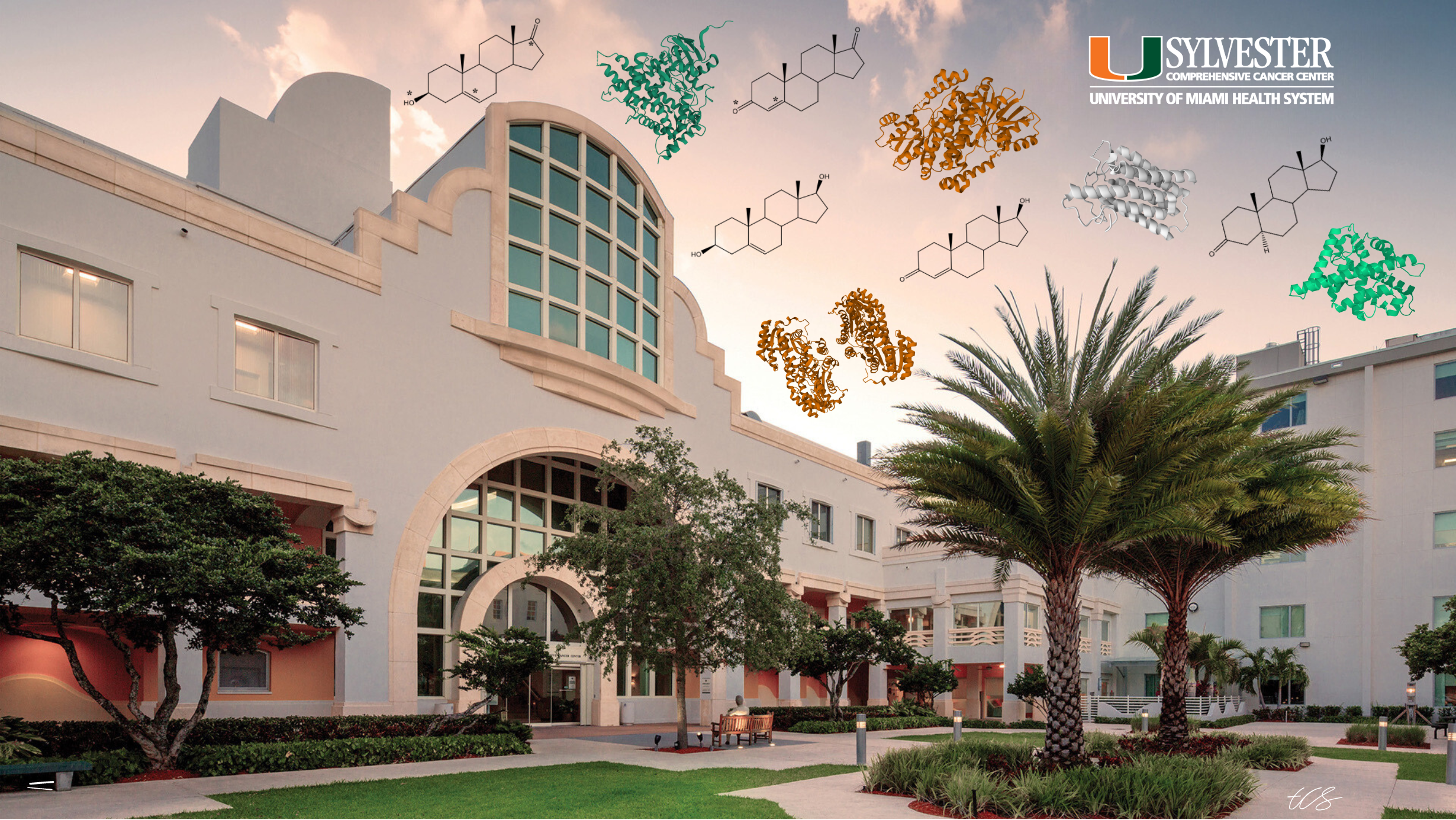Welcome to the Sharifi Lab!
Our Research
Broadly, our group studies fundamental metabolic processes that govern prostate cancer progression. Our discoveries have revealed that cancer engages what are usually normal physiologic processes or their variants, and redirects them for the purposes of tumor progression and treatment resistance. Overall, we have found that the biotransformation of steroids in peripheral tissues (e.g., prostate cancer) from inactive to active steroids (e.g., DHT), and vice versa, regulate not only broad transcriptional programs, but also and more importantly multiple clear clinical phenotypes in humans.
The first line of therapy for metastatic prostate cancer is androgen deprivation therapy, which suppresses testicular androgens that fuel cancer cells to grow and spread, including gonadal testosterone and intratumoral concentrations of the most potent androgen, dihydrotestosterone (DHT). While ADT is successful early on, cancer cells eventually become resistant and learn to make their own DHT (termed castration-resistant prostate cancer; CRPC). Our lab investigates how CRPC cells make their own androgens, and how blocking these pathways may help treat the disease.
Overview of androgen signaling and therapies in prostate cancer.
Androgen biosynthesis is regulated by the hypothalamic-pituitary-gonadal and hypothalamic-pituitary-adrenal axes, which govern the production of gonadal and adrenal androgens that serve as precursors for DHT, the principal AR ligand in the prostate (pre--receptor activity). On ligand binding, AR translocates from the cytoplasm to the nucleus to bind to DNA as a homodimer, permitting transactivation of target genes and pathways (postreceptor activity). Examples of different clinically approved as well as investigational inhibitors are highlighted. ACTH, adrenocorticotropic hormone; AR, androgen receptor; ARE, androgen response element; DHT, dihydrotestosterone; FSH, follicle-stimulating hormone; GnRH, gonadotropin-releasing hormone; HSP, heat shock protein; LH, luteinizing hormone; NTD, N-terminal domain; PROTACs, proteolysis-targeting chimeras; PSA, prostate-specific antigen; SARDs, selective androgen receptor degraders. (From Dai, Dehm and Sharifi, Journal of Clinical Oncology. 2023)
Major pathways of steroidogenesis that contribute to androgen biosynthesis in prostate cancer and human physiology.
Shown are the canonical pathway of DHT synthesis through testosterone (blue) as described in normal physiology, as well as the 5α-androstanedione (5α-dione) pathway, which is the primary route of DHT biosynthesis from adrenal precursors in prostate cancer. More recently, the 11-oxygenated androgen pathway has gained increasing recognition for generation of 11-keto-testosterone and 11-keto-DHT, which can serve as bona fide AR agonists in prostate cancer (green). In addition, multiple other potentially relevant pathways exist, including the alternative, backdoor pathway (orange). Of note, this simplified schematic is not comprehensive in depicting all possible pathways, including those through 17α-OH progesterone derivatives as intermediates. AD, androstenedione; AR, androgen receptor; DHEA, dehydroepiandrosterone; DHT, dihydrotestosterone; HSD, hydroxysteroid dehydrogenase. (From Dai, Dehm and Sharifi, Journal of Clinical Oncology. 2023)




